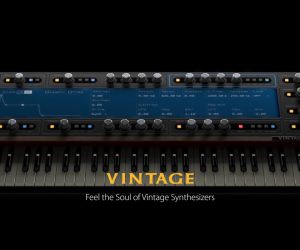
Real World Education
TAFE SA Sound Production courses keep it real with industry-standard equipment upgrades.
When you’ve just come out of a pandemic that’s laid waste to the entire live events industry, it’s hard to talk about ‘real-world audio education’ with much conviction. Covid has almost squashed all the life out of festivals and other in-person events. So when AT visited the Adelaide College of the Arts campus earlier this year, we weren’t that surprised to find its halls of learning a little subdued — except for the occasional angsty drama student, it was pretty quiet!
When we asked audio lecturer, Craig McCowat, where everyone was, the answer was surprising and encouraging: “Most of them are working on WOMADelaide!”
March is Adelaide’s festival season. And if you’re a tech person or anyone who owns any production gear, it’s your busiest month of the year. WOMADelaide takes the headlines but there are any number of other events and pop-ups to entertain and divert. Adelaide’s ‘Mad March’ may not be back to pre-Covid insanity but the trajectory is looking good.
“All our lecturers work in the industry,” explains Craig McCowat. “And we have strong industry connections in Adelaide. It means that we have a solid sense of where the work is; what best practice is; and what equipment the industry is using.”
INDUSTRY TIES
TAFE SA’s Diploma of Music Industry (Sound Production) is not for the faint hearted. After working through the six-month Cert IV component of the course, there’s a further 12 months of full-time study, working through the three key audio disciplines: live sound production, music production and sound for picture. It’s 9-5, five days a week of audio immersion. Alumni of the course can and do find themselves in roles across the industry, from Film SA, to NEP and Novatech Productions.
Being so rooted in the industry and the real-world working demands of audio, Craig and his colleagues give any equipment updates many hours of consideration and, sometimes, impassioned debate, especially when there’s a change of mixing platform in offing:
“It got pretty heated over the lunchroom table when we were debating whether to stick with an analogue mixing console in our music production studio or go all digital,” recalls John Bridges, Post Production Sound lecturer. “These equipment purchases mean a lot to us and we’re all very passionate about what’s best for the TAFE and the students.”
Which leads us to the news of TAFE SA’s recent console purchases, headlined by an Avid S6L in the live production theatre, called the X Space. An Avid S4 console now graces the post production studio, while an (analogue!) SSL XL Desk now takes pride of place in the music production studio.


AVID S6L
The S6L’s star is on the rise. Avid’s Venue SC48 might have been on just about every rider some 15 years go and now its S6L digital mixing system is going that way as well. It’s now the key piece of mix hardware in the live production stream of the TAFE SA Music Industry (Sound Production).
“The first reaction we get from students when they see the S6L is ‘wow!’. Then it dawns on them they need to learn how to run it. Thankfully, the S6L is a delight to operate. We can get students balancing a mix, working the EQ and compression in under an hour.”
Every week, live production students work together to stage a live concert in the X Space. Bands, comprised of TAFE students, perform; Cert IV Sound Production students mic up instruments and prep the DB Technologies VIO line array; while diploma students calibrate the PA with Smaart, then mix monitors, and front of house on the Avid S6L. Theatre Technician students work the lights and vision to complete the production picture. It’s an excellent real-world highlight of the week, and a winner for all involved.
“Some people have pointed out that our students aren’t necessarily going to walk out of this course and straight into a role where they’re mixing on an S6L. More likely they’ll be on a Behringer X32 or perhaps an Allen&Heath SQ console,” Craig McCowat observed. “But I want our students to be prepared for the best-case scenario, and feel empowered to take on the bigger jobs if they’re thrown into a situation. Working on and mastering an industry-standard console like the S6L gives our students confidence.
“In fact, the S6L just ticked every single box. It was the perfect package for us, to be honest with you, as far as the way it interfaces with Pro Tools, and the fact it’s an outstanding-sounding console. If it weren’t, it certainly wouldn’t be getting adopted worldwide. It’s just a great setup — we’re very, very happy.”

POST IS FIXED
The TAFE SA audio staff knew they wanted the Avid S4 control surface before it even existed. They were shopping around for a replacement to the old Digidesign/Avid C24s but were drawing a blank. The S3 wasn’t quite right for their teaching space and the S6 was out of their league.
“Luckily, the S4 was released when it was,” commented John Bridges, Post Production Sound lecturer. If you aggregate all of the decades of John’s professional history at Channel 9 Adelaide, Wombat Studios and his freelance post production work then, by rights, he should be about 120 years old. I can assure you he’s not. (“When I started at Channel 9 we had a 12-strong audio department. Now, they don’t actually even have an audio person on staff.”)
TAFE SA is an Avid Training Partner, so maintaining Avid hardware for the post production studio made sense. Obviously the S4’s Pro Tools integration is as tight as is possible — students learning Pro Tools in other classes feel comfortable sitting in front of the S4, working with Pro Tools.
“Students quickly get blown away by the automation and panning possibilities working with the S4 and Pro Tools,” notes John. “The next stage will be upgrading the studio and the S4 to be a Dolby 7.1 or, hopefully, Dolby Atmos capable.”
Audio students work with film students on location sound recording, mixing, Foley and all other aspects of sound for picture. “They might enrol in this course believing they’ll be a famous music producer but a lot of our students get very carried away by the Film & TV aspects of the course — they love it.”
These equipment purchases mean a lot to us and we’re all very passionate about what’s best for the TAFE and the students

LIVING LARGE: XL DESK
As you’ll already have inferred, the staff on the Analogue side of the lunchroom table convinced the Digital side of the merits of an analogue mixing console.
“Actually, I was one of the digital proponents,” admits Senior Pro Tools lecturer, Dean Edwards. “But I’m not afraid to admit that I was wrong. The SSL XL Desk has been a great asset and a great teaching tool.”
The SSL XL Desk takes a console design-path less travelled. It’s designed for working in a DAW environment but without DAW integration. On one hand it’s very much like a tradition 24:8 analogue console but also packs an 18-slot 500 series rack allowing the desk’s busses and channels to access your choice of EQ or compression, for example.
“The XL Desk is just as suited to tracking as it is to mixing and working with Pro Tools,” comments Dean Edwards. “It’s obviously not a control surface — it’s an analogue mixing console — and the benefits there is it allows our students to visually get a handle on signal flow — in analogue world a pot, for example, has a single purpose which makes it a easier to get to grips with a concept that’s more fluid and virtual in a DAW.
“We’ve got the console’s 500 series rack populated with a selection of classic-style EQ and dynamics modules that allow our students to hear the difference between a Neve versus an API EQ for example, or to hear dbx compression compared to the SSL master bus compressor. It’s great training for their ears. ”
FIRE IN THE BELLY
Audio colleges have something of a reputation for being ‘broken dream factories’. Being the next Mark Ronson or Kanye might be an enticing prospect but you probably have as much chance making it onto the international space station. It doesn’t mean you shouldn’t shoot for the moon but at TAFE SA it’s heartening to see the staff helping students reach achievable employment goals as well as cheering on their less realistic ones.
“New students seem to think that being a sound engineer is only about recording megastars, releasing platinum albums, or touring the world as Metallica’s front of house mix engineer,” observes Craig McCowat. “When they get here you can see it dawn on them: ‘oh, hang on, there’s a whole other world of film and TV that we didn’t even know existed, for example, or the world of live and corporate events.
“It’s often easy to see the students that are bound to succeed. From Day 1 the equipment and the course content ignites something in them. A fire in the belly and determination to make a go of it in the industry; that’s what it takes to succeed.”
Avid: avid.com
Innovative Music (Avid supplier): innovativemusic.com.au
Amber Technology (SSL): ambertech.com.au
Muso’s Corner (supplier): musoscorner.com.au























RESPONSES